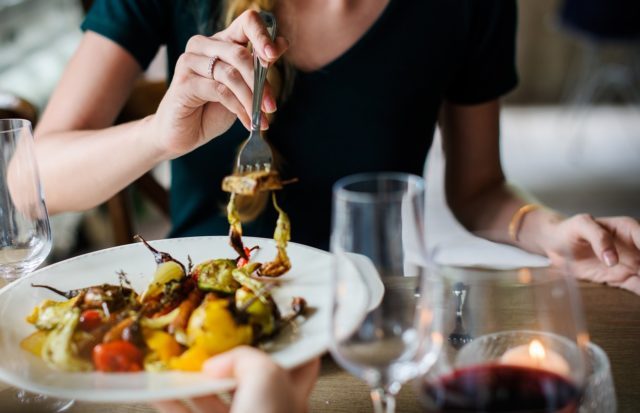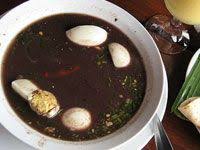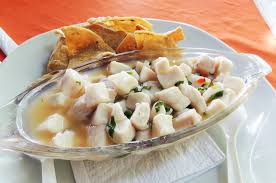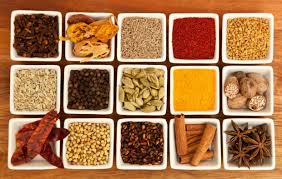अन्नमयंहिसोम्यमन, Mind is nourished by food, (Chhandogyopanishad 6.5.4)
A part of a verse taken from one of the oldest Hindu texts exhibits the importance of food in our daily lives and just like indigenous traditions in Latin America, Hindu traditions too encourage people to hold food in the highest regard. In this article, I shall attempt to offer a glimpse of both Costa Rican and Indian cuisine which are well known for its variety, flavor, and appeal all over the world.

Primarily it is interesting to note that Costa Ricans are mainly rice eaters and while rice dominates the South, East and Northeast region of India, wheat and other grains make up the lion’s share in North and Western India. It should also be borne in mind that due to its larger size, Indian cuisine is in fact one of the most varied in the entire world and hence foreigners who travel to India are taken by surprise.
Unfortunately, Indians areunfamiliar with Costa Rican cuisine and hence it would be important to discuss a few of them. As food is dependent on geography, Costa Rica’s agricultural diversity is well known ranging from rice, coffee to tropical fruits which form an important part of its national cuisine.
Primarily, Gallo Pinto and Casado would be the two main dishes served for breakfast and Lunch. Consisting mainly of rice and beans it is served with various side dishes. Olla de Carne and Sopa Negra are two main soup dishes that resemble a broth and is quite filling in nature. Ceviche is a popular Costa Rican dish that is served chilled and is made out of marinated raw fish and with an addition of vegetables. Chifrijo would be a traditional snack made of fried pork ribs and garnished with vegetables which must include the iconic black beans. Another dish that would be iconic is Tamales, which is made of stuffed dough with meat, vegetables, and cheese fillings and is wrapped in banana leaves for steaming.
One may easily notice the diversity in Costa Rican cuisine which ranges from rice based meals to simple snacks and soups. Here I take the liberty to discuss some of the most iconic dishes from India even though at the outset I must warn that it would be difficult to incorporate everything.

Northern India is well known for its variety of spices and the liberal use of the Tandoor or the open pot oven. Some famous dishes from this region are Makkiki RotiaurSarson da saag or cornflour bread (similar to the tortillas) served with cooked mustard leaves, the Rumali roti or the bread the resembles a handkerchief and the butter nan which is coated with butter.
While the population of this region is usually vegetarian, the cuisine may vary. The Bajra Khichdi is a popular dish made of coarse millet and served with curd, while the Madrais a vegetable dish made of chickpeas, almonds and yogurt. If one moves to the east one may encounter the famous LittiChoka which are small dumplings made of powdered chickpea and served as a snack. Whereas in western India, dishes such as the Dhokla and the Khandvi offer a spicy and sweet flavor and is consumed as a popular snack. Vada Paoand the Vindaloo would be two other recommended dishes from western India. The southern part of India is known for its liberal use of spices and preparations that range around fish and pork. For instance the Pandi curry is spicy pork curry which is served with bread, and the IrachiIshtu is a stew made from a concoction of various meat.
Who can forget the famous South-Indian dishes comprising of the Dosa thatis stuffed with vegetables and resembles a gigantic tortilla and is served with a variety of pickles, or the Vada that resembles fried doughnuts but are savory in nature. This region is well known for its extremely sour and spicy chutneys or pickles. Most of them are made of coconut, tamarind and other assorted condiments.

Eastern and Northeast India again display a complete different style of cuisine which is relatively unexplored. While the federal states of Odisha and Bengal offer some of the best sweet dishes such as the ChennaPoda which is baked cheese and is sweet in nature and the famous Roshogolla or cottage cheese based sweets, shaped like a ball and dipped in sugar syrup. Northeast India is famous for its fermented dishes which can range from Gundruk which is fermented leaves to bamboo shoots.
One of the most iconic dishes of this region would be the smoked pork with axone or fermented soybeans. The eastern part is also known for its affection for fishes and indeed fried fish or in the form of a curry, it forms an important part of the diet. In fact the daabchingri (Prawns cooked and served in a tender coconut shell) is a well-known dish from the eastern part of India.

Many have a misconception that Indians are vegetarians, but it should be a surprise to know that quite a large number including Hindus are non-vegetarians and meat forms an important part of their diet.
While Fish is mostly consumed in the coastal areas, the mountainous regions see their fair share of use of meat. Biryani or rice cooked with meat is a popular cuisine that dominates northern, central and southern India. Dishes such as the Pasanda which is lamb curry, Ilishmaacherpaturi similar to the Costa Rican Tamales, Madras Curry which is the iconic dish from Southern India and Laal Maas or the Western Indian version of mutton curry. When it comes to meat based preparations, the Northeast part of India must be mentioned. From the Irombamade of fermented fish, the Jadoh made of pork and rice and the succulent Momo which are meat filled dumplings one may notice that meat is consumed liberally in India.
Since India is an agricultural heaven, vegetable based preparations are spread all over the country. Right from the Aloo mataror potatoes with peas to Aloo Bhindi potatoes with okra and the liberal use of leafy vegetables fondly called as saag in Hindi it’s a paradise for those who look for a healthier diet. Avialis a popular dish is southern India akin to a stew and is perfect for those who are up for simpler options. Costa Ricans may be surprised that Rajma is a dish made of black beans into a thick curry and is quite popular all over India, particularly in the Northern regions. Paneer or cottage cheese forms an essential part of Indian vegetarian cuisine and can be used in the form of curries or as a side dish. Who can ignore the Palak Paneer or the ShahiPanner which are made of cottage cheese, leafy vegetables and cooked in a deep sauce? One may also be surprised at the presence of daal or steamed lentils in the form of soups with every meal, this feature is peculiar to the subcontinent and for us daal is a must with every dish. In fact sabji or vegetable preparations are a must for any Indian cuisine.
Since desserts are a part of any meal, Indians cannot be left far behind and we have our own varieties of desserts which range from sweet dishes to our own version of ice-cream. Western India offers us Panjri and Pinni made of a concoction of wheat flour, nuts and seeds while North India is famous for its Shrikhand or a yogurt-based dessert and Laddu or ball shaped desserts.

No one can ignore the Jalebis which are sweet dishes fried and resemble concentric circles. Eastern India probably has the highest number of desserts ranging from Roshogolla, chumchumand mishit doi or sweetened yogurt. Kulfi is the Indian version of ice cream specially recommended for hot days. From the South we have the Mysore Pak. Indians are fond of milk based products and hence most of the desserts are made of milk.
Honestly, it is next to impossible to mention each and every dish from India, but one may notice the variety which has been shaped by the culture and geography of the country. Indeed, even we wonder at the diversity and it would take a lifetime to taste every dish.
The beauty of the cuisine is that there is something for everyone, for those who would love to gorge on meat and even for those who would go completely vegan. Be it seafood, desserts or something closer to the mountains, India has everything to offer. If one visits India, they should be prepared for a surprise and can expect a gastronomic wonder.


Dr. Arnab Chakrabarty Guest Lecturer, Department of International Relations, Sikkim University,Gangtok, Sikkim, India.
